What do you think, will the type of liquid in a glass impact a magnet’s attraction? We use three different liquids to test our theory.
Using simple supplies found at home, kids can learn about viscosity and resistance through this simple hands-on experiment. Preview our demonstration video using water, vegetable oil and corn syrup, but our printable instructions and simple scientific explanation include alternate liquids you can use to test the concept.
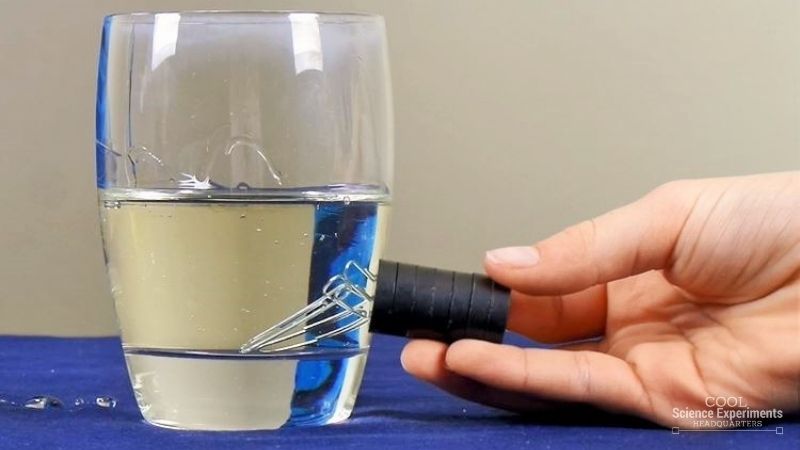
JUMP TO SECTION: Instructions | Video Tutorial | How it Works
Supplies Needed
- 3 Glasses
- Magnet
- 12 Paper Clips
- 1/2 Cup Water
- 1/2 Cup Vegetable Oil
- 1/2 Cup Light Corn Syrup
Viscosity & Magnetic Attraction Lab Kit – Only $5
Use our easy Viscosity & Magnetic Attraction Science Lab Kit to grab your students’ attention without the stress of planning!
It’s everything you need to make science easy for teachers and fun for students — using inexpensive materials you probably already have in your storage closet!
Experiment Instructions
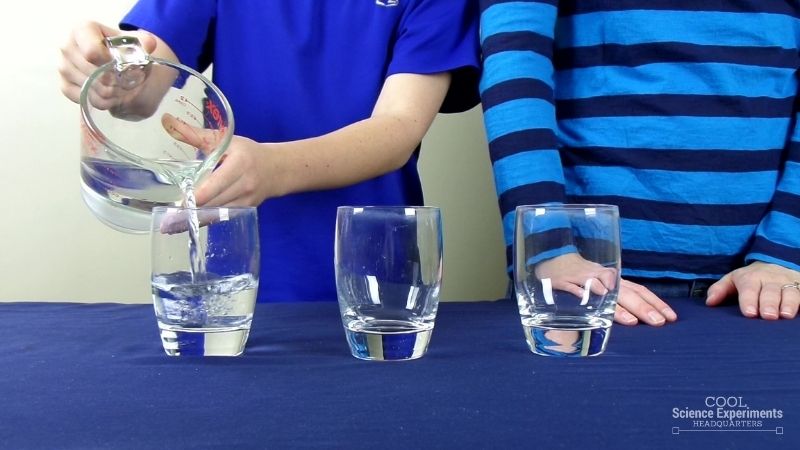
Step 1 – Place three cups in a row. Fill the first glass with the water.
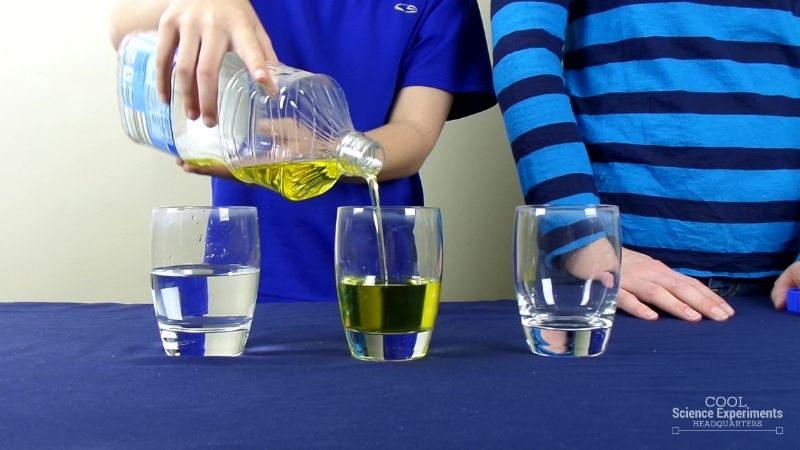
Step 2 – Fill the middle glass with the vegetable oil.
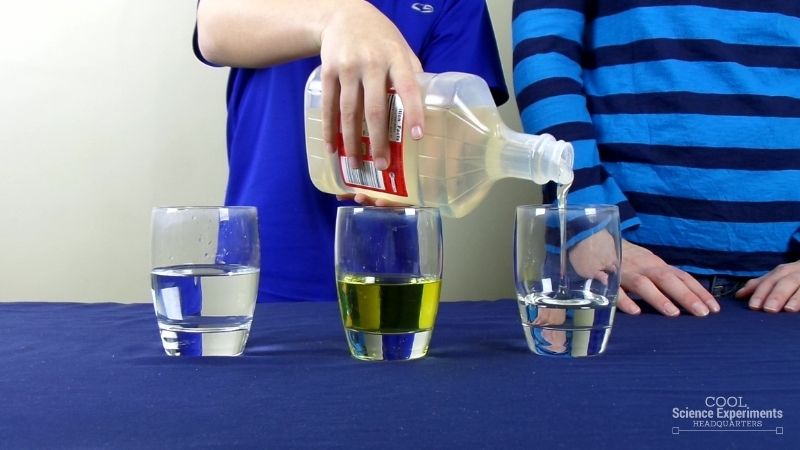
Step 3 – Fill the third glass with the corn syrup.
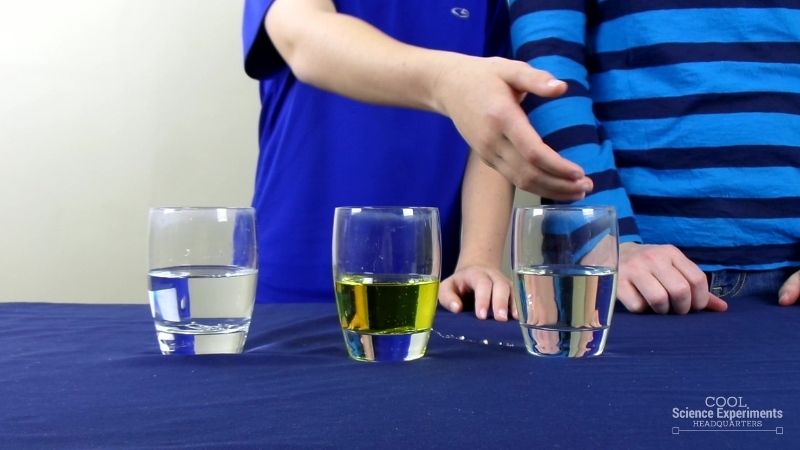

Step 4 – Next, place 4 paper clips in each glass.
Step 5 – You may need to gently push the paper clips to the bottom of the glass with the corn syrup.
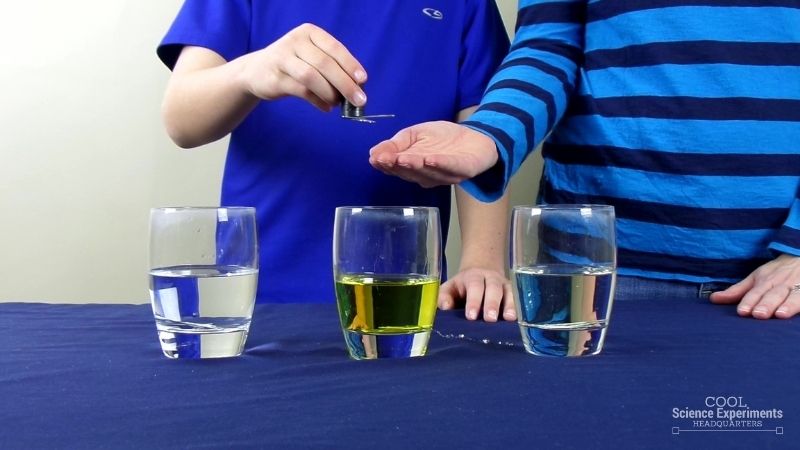
Step 6 – Test your magnet by showing how paper clips outside of the liquid are attracted to it.
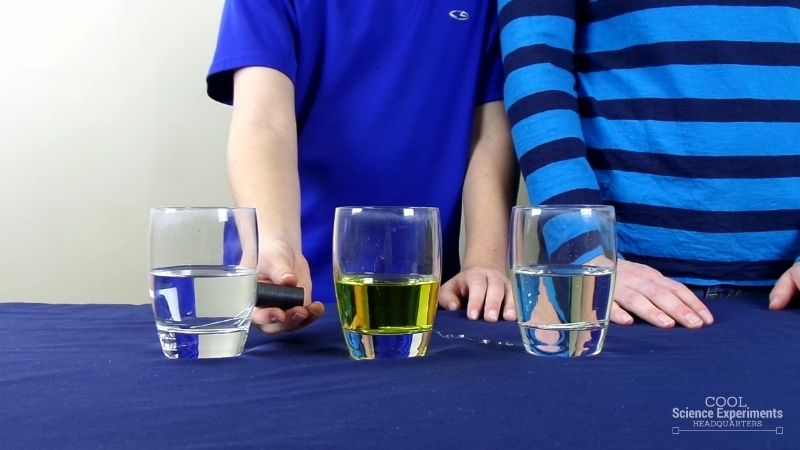
Step 7 – Next, take your magnet and place it next to each glass. Notice that all the paper clips are attracted to the magnet, but that the liquid in the glass causes the paper clips to move differently. Do you know why? Find out the answer in the how does this experiment work section below.
Video Tutorial
How Does the Science Experiment Work
The question answered in this experiment is how does the consistency of a liquid impact magnetic attraction.
A unique property of liquids is something called viscosity. Viscosity is a liquid’s resistance to flowing. Viscosity depends on the size and shape of the particles that make the liquid, as well as the attraction between the particles. Liquids that have a LOW viscosity flow quickly (ie. water, rubbing alcohol, and vegetable oil). Liquids that have a HIGH viscosity flow slowly (ie. honey, corn syrup, and molasses).
When using water and vegetable oil, the paper clips moved through the liquid to the magnet very quickly. This is because water and vegetable oil have a low viscosity and provide very little resistance to the paperclips moving through them. When using corn syrup, the paper clips moved very slowly toward the magnet. This is because the corn syrup has a high viscosity and provides a lot of resistance to the paper clips moving through it.
The magnet still attracts the paperclips in each of the scenarios, but the experiment shows how the viscosity of a liquid impacts how fast (or slow) the paperclips move toward the magnet.
Viscosity & Magnetic Attraction Lab Kit – Only $5
Use our easy Viscosity & Magnetic Attraction Science Lab Kit to grab your students’ attention without the stress of planning!
It’s everything you need to make science easy for teachers and fun for students — using inexpensive materials you probably already have in your storage closet!
I hope you enjoyed the experiment. Here are some printable instructions;
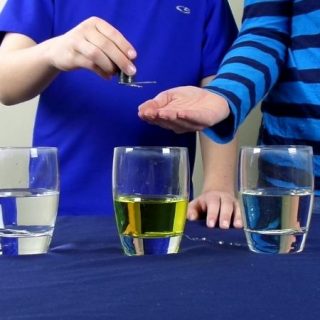
How Liquid Viscosity Impacts Magnetic Attraction Science Experiment
Materials
- 3 Glasses
- Magnet
- 12 Paper Clips
- 1/2 Cup Water
- 1/2 Cup Vegetable Oil
- 1/2 Cup Light Corn Syrup
Instructions
- Place three cups in a row
- Fill the first glass with the water
- Fill the middle glass with the vegetable oil
- Fill the third glass with the corn syrup
- Next, place 4 paper clips in each glass
- You may need to gently push the paper clips to the bottom of the glass with the corn syrup
- Test your magnet by showing how paper clips outside of the liquid are attracted to it.
- Next, take your magnet and place it next to each glass. Notice that all the paper clips are attracted to the magnet, but that the liquid in the glass causes the paper clips to move differently
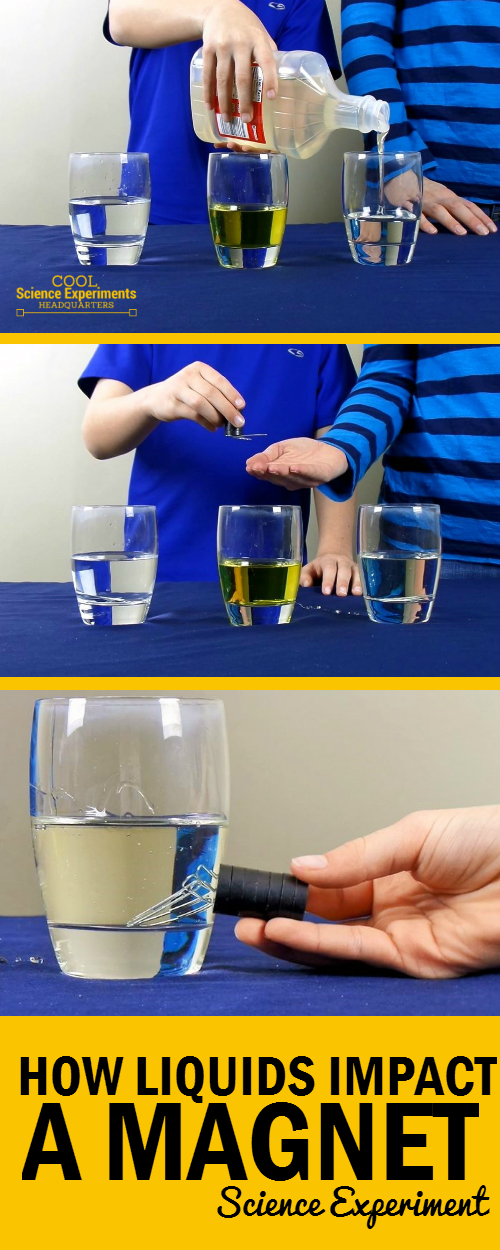
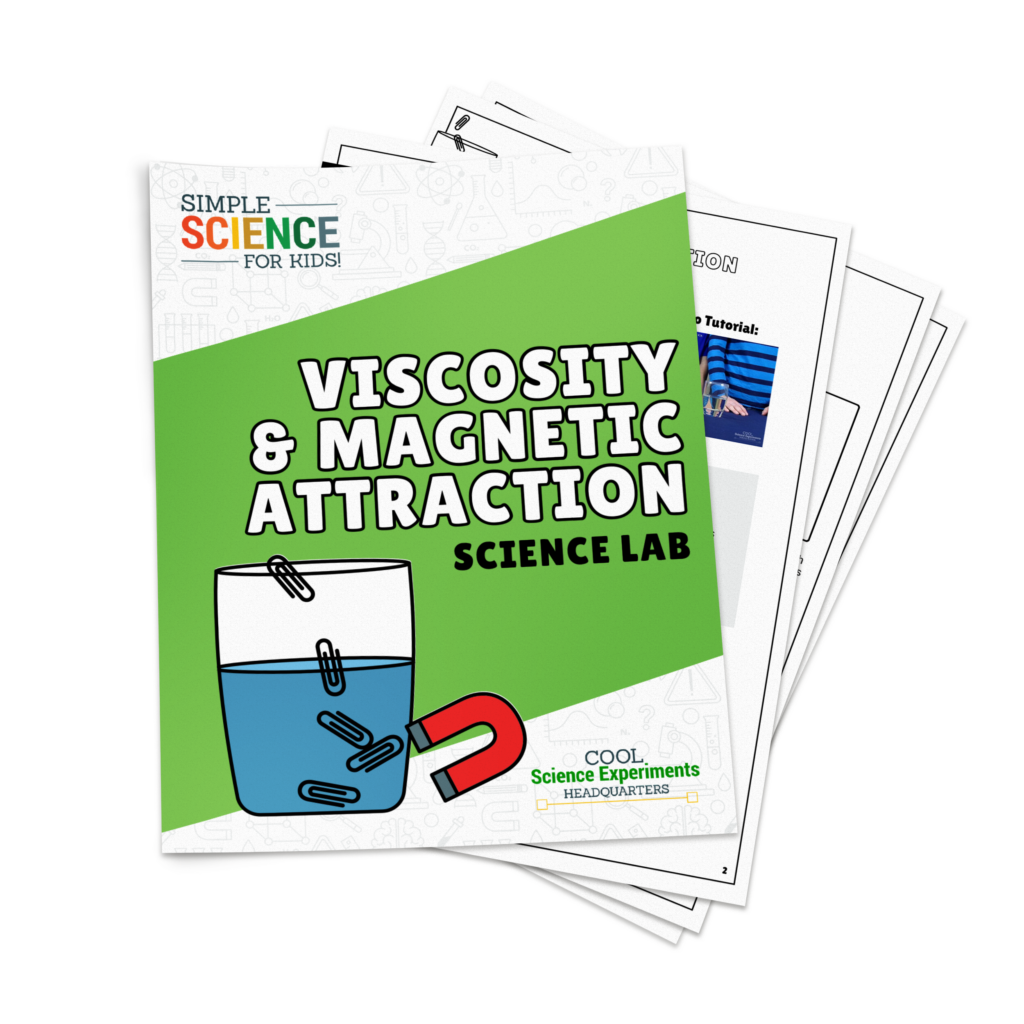

Will this work if plastic cups are used?
I believe it will, but I’ve never tried it. If you do, leave a comment and let us know if it works.
Thanks!
Danielle
I don’t think they will work
It will definitely work! Most cups will work because the walls of the cups are thin. Additionally, metal cups and water bottles will probably not work because the molecule are packed more tightly. These materials can also contain iron particles which will make them magnetic and therefore will interfere with your experiment.
It works, we used a plastic water bottle and it was a success!
this is my science fair project i’m going to do
Is this good for a science project for eighth graders or is it to easy?
Hi, just a small comment. Is not the magnetic force that is affected is that in the case of syrup the friction force is bigger so the total force acting on the paper clip is smaller, then the acceleration will be smaller. F=m.a
Nice experiment to show relationship between Center of Gravity and Balance Points. At the start point the Center of gravity is only a little higher than the point it’s touching the board. If it moves to the wider(higher) end, the Center of gravity lowers because the boards get wider and the contact point on the funnels gets further out, so the Center of gravity is actually getting lower as the funnel appears to be going UP HILL. It is in fact going down toward the direction of gravity.
I ENJOYED THIS EXPERIMENT AND PERFOMED THE SAME IN MY SEMINAR.I AND MY FRIENDS WAS HAVING A GOOD INTERACTIONS.SO GOOD.
looks fun
HI thanks for the video it was cool to know how liquid impacts a magnet.
Awesome:)
This fits perfectly in our magnet lessons for homeschool tomorrow.
Thank you! The kids are going to love it. I’m thinking we may even expand on it a bit — they love to experiment.
How strong are your magnets?
Hello,
that’s a pretty cool experiment, especially for kids! Thanks for the great idea, i will test it soon with my kids.
Regards
Christine
Thank you for sharing! Can’t wait to try it with my class this week.
Hi Can I use honey instead of corn syrup ?
OMG im doing this experiment for my science fair on school
Thanks